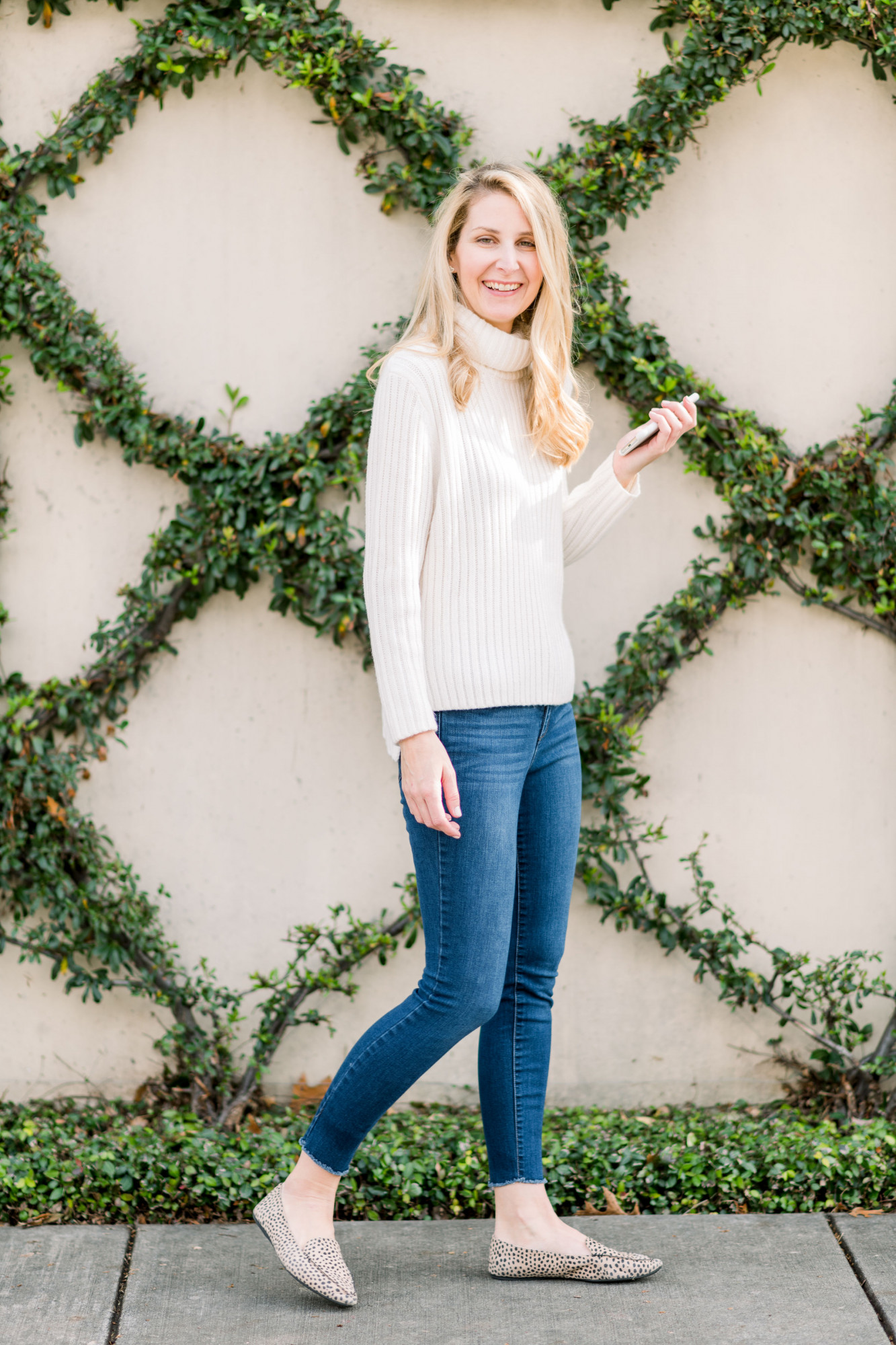It’s part two of our “So You Want to Work with an Influencer” series where we are educating our small business owner friends who are interested in influencer marketing.
In part one we shared the terminology of the influencer marketing, including the difference between organic and sponsored content, as well as how to reach out to an influencer. Today we are helping you assess if an influencer has a truly engaged audience and how to determine if an influencer is a good fit for your brand.
1. Should I only work with someone who has a large instagram following?
Great question! Many assume that if an influencer has 500K that will translate into huge sales or follower growth. That might be the case but it doesn’t always translate this way.
As you will see in this post, there are many ways for influencers to inflate their followings so you have to do your due diligence. Larger brands are getting wise to these inflation methods, and know what questions to ask to determine an influencer’s true following. I am doing this post because I want smaller brands to know as well!
2. What is a micro influencer?
A microinfluencer has a smaller following than say a celebrity or big time influencer with 500K followers. A small, active influencer with niche content and a loyal following could actually be a great fit for your brand even if they just 10,000 followers.
3. How can I tell if an influencer follower count is legit?
It used to be that if an influencer received good engagement (i.e. a large number of likes and comments on posts) it meant they have an active, loyal following. Unfortunately, this really isn’t an accurate test anymore because there are ways for an influencer to inflate likes and comments.
It’s hard to tell definitively if there are “inflation” methods being used but here are some questions to ask to help you flesh out an influencer’s following:
- Are the people commenting on the influencer’s posts everyday people (i.e. your customers) or other influencers and brands? It looks great to have 20 comments on a post but if they are all from other bloggers, I would not count this a true engagement. These are called engagement pods. See question 5 for explanation.
- Does the influencer receive a massive amount of likes in the first few minutes but her follower count doesn’t matches up with those likes? They may be in a like pod or have purchased likes.
- Who are their followers? Click on some of the people who like their photos. If you see many foreign names, the influencer may have purchased fake followers.
- How many people is the influencer following? If they are following a ton of people (say 5-6K accounts) that often (not always) indicates they are doing the “follow/unfollow” method of growth. That is when a person or business follows a bunch of accounts and unfollows them a few days or weeks later. Statistically when you do this a small percentage of the accounts you follow will follow you back. Then you unfollow all those people and start over. This can lead to a high follower count but typically not people who really care about what the influencer has to say (i.e. low engagement).
Bottom line: If you are a brand, you want to work with people whose followers are following them because they genuinely care about what the influencer says, not because they want to win a giveaway or because they have some mutual agreement with other influencers. In question 5, we listed questions to ask influencers to determine if they are a strong match for your brand.
4. What is an “Pod”?
A pod is a group of hundreds or thousands of influencers/brands who agree to engage (like or comment) one another’s photo.
This started when Instagram changed its algorithm a while back. The thought was that if your photo received a lot of likes and comments in the first few minutes, it meant it must be an engaging photo so the algorithm would show it to more people.
There are strong opinions on both sides of the “pod” issue. I am not making a judgement call on if they are right or wrong. You really can’t blame influencers and small brands for trying to get around the maddening thing that is the algorithm. And it’s nice that these creatives want to help each other out. But is it true engagement? I would say no.
And it’s why I don’t think you can use the number of likes/comments as a true measure of engagement anymore. You have to dig deeper. Keep reading for questions to ask!
5. So What Kind of Things Should I Ask an Influencer?
So to find out if an influencer is right for your business, I would not hesitate to ask for the things you can’t see on their feed (i.e. the numbers the influencer can see on their business analytics page):
- For Instagram: Ask about the following numbers: Impressions (how many people actually saw the post, not just liked it). For example, I am personally terrible about liking and commenting on my friends’ posts but I still read them – and this is important to a brand. Also ask about Instagram story views, profile visits, link clicks (swipe ups!), and sticker taps. All these numbers can be found on the Business Insights page of an influencer’s Instagram account. (This goes back to question #5 in yesterday’s post about working with influencers who treat their work as a business.)
- For Blog/Website: Ask about monthly page views, unique visitors, email list subscribers. For example, they might write an amazing blog post but if they don’t have a big email list how many people are really going to see it?
- For both Instagram and Blog:
- Demographics. If you are targeting people in the 40-50 age range, you don’t want to pay to work with someone who has mostly readers in the 18-25 age range. If your business only has locations in the South you don’t want to work with a blogger who has a 90% New England following.
- Average Conversion Rate. If you are wanting to drive sales this number is very important. Industry average is 1% and the higher the better because this number shows an influencer’s followers trust him or her.
- For other social channels:
- Facebook and Pinterest are highly underrated social channels but can have a big impact. Ask if they are active on these channels followed by the questions above. And don’t forget about YouTube!
- Pods:
- Ask if they participate in comment pods to help measure true engagement.
6. What types of sponsored content can an influencer provide?
Instagram stories: Stories are a great opportunity to share your brand in a very organic way. Influencers can film a short video of themselves using or talking about your product and post this on their stories linking directly to your website. This type of sponsored content is shorter and not as styled, so it can be quicker for influencers to produce and share. Therefore, likely less expensive for the brand too!
Instagram post: An Instagram post is a way to showcase your product in a more styled environment. Creating this type of content will require more time and possibly professional photography so this can be more expensive but it will live on their feed forever. Because of this, Instagram posts are typically more expensive than stories.
Social Advertisement: A social advertisement is a Facebook or Instagram post or story that is “boosted.” This means the influencer will pay Facebook to show the post to more people. These ads can be targeted to specific demographics and can be very effective if you have a very specific target audience. A brand will pay the influencer the cost of boosting the post and a small fee for the service they are providing.
Blog Post: A dedicated blog post is blog post written entirely about your brand. This will include both writing and multiple styled photos of your product. This is a more expensive option because it is the most time-consuming for influencers to create. However, this can be a very effective marketing tool if your budget allows because the influencer will likely post accompanying Instagram stories, posts, Facebook posts and even email promotions to send readers to read the dedicated blog post.
Email Marketing: Email marketing is a great opportunity for brands to get in front of an influencer’s most engaged followers! If a follower likes an influencer so much so that they have subscribed to their email list, this indicates that they are a consistent and trusting reader. A highly engaged and trusting audience is more likely to believe and buy into what the influencer is selling.
Giveaway: Partnering with an influencer to give away your product can be a very effective tool for increasing brand awareness and growing your social media following. An influencer will most likely require giveaway entrants to follow your brand on Instagram to be entered in the giveaway so you will get more followers too! A giveaway is like a styled Instsgram post but actually takes more time to manage so expect a fee with this as well.
Brand Ambassador: A brand ambassador is a more long-term partnership between an influencer and brand. Think of this as almost like brand spokesperson. The ambassador will organically share the brand in their day to day life for several months or even years. Long term relationships like this really allow the influencer’s following to get to know your brand in a genuine and authentic way.
Opportunities all come at different price points so reach out to an influencer you may want to work with and they can work with you to find something that fits into your budget.
7. Does an influencer have to use #ad?
Yes. If you are paying for the influencer to post about your brand it is required by the Federal Trade Commission to disclose it.
8: How much should I budget for influencer marketing?
Because this industry is still fairly new, there really isn’t an industry standard for rates – which can be quite frustrating! An influencer with a (legit) 300K Instagram following may charge thousands of dollars for an Instagram post, while someone with 5,000 might start at $100. You really just have to ask each one!
Side note: you may have your heart set on an Instagram post or a certain influencer but hopefully the above information will open you up to all the possibilities out there that will fit within your budget.
9. What is your biggest tip for small brands wanting to work with influencers?
Don’t have a one and done approach to influencer marketing. Work with one or multiple influencers over a period of time to build brand awareness and reader trust. Make sure their message fits into your overall marketing strategy. If you select an influencer that is “on brand” you will see good results with this.
Also, ask the influencer what she thinks is best for your brand. For example. many brands come to us thinking they want one thing but Tiffany is so great about showing them an option that might be an even better – and more – affordable fit.
10. I worked with an influencer and didn’t get a good ROI. Should I try again?
That is frustrating. It could be for several reasons:
- It wasn’t a good brand match. You might personally love to follower an influencer but that doesn’t mean she’s the best one to reach your target customers.
- The influencer had inflated numbers. See #3.
- Perhaps you had unrealistic expectations. ROI can be very hard to measure in influencer marketing. For example, people might see their favorite influencer talk about a product several times before they purchase it. But the chances they actually purchase it through a unique link is small. You have no way to track that sale. Influencers can definitely drive sales (which is why asking about their overall conversion rate is helpful) but creating brand awareness is a large part of what you are getting when you engage in influencer marketing and that is often hard to track. Also why asking the questions in #5 will help you determine if her audience is worth paying to reach.
I know this was A LOT of information but I hope it’s helpful if you are a brand owner or influencer! I truly believe influencer marketing is here to stay, especially as the inflated or inauthentic accounts get weeded out.
What do you think? Ask any questions or share your thoughts below! If you missed part one of this series, go back and read that here!







What do you think?